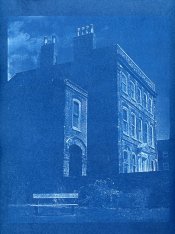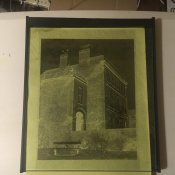I agree it's not cheating. I've never made a cyanotype, so take this free advice for what it's worth.
From reading this thread it seems to me that the main objective is to make the exposure times shorter. Why? My paper negative contact prints often take more than an hour in the sun or more than 2 hours under my BLB bulbs. What's the big hurry that it would be worth messing around with oil and wax? If it's only about going faster and not about what the final print looks like, I don't see the point at all. RC paper negatives don't show much paper texture.. if that's the problem then you could use RC instead of FB. But I personally wouldn't mess around with it just to make the printing happen faster.
Hand coated xerox paper would definitely show a lot of coarse paper pattern in a print ( which might be a GOOD thing depending on your taste). That's one reason* the old calotypists waxed their negatives. But waxed negatives also have their downsides: they need to be handled very carefully so you don't get "cracks" in the wax, and it can yelllow over time, and hot wax fumes can be toxic.
There's a drawing somewhere of an old printing shop.... it shows two people with maybe a dozen prints exposing in the sun.... and they are leisurely walking around and checking the progress of the prints...it seems idyllic to me...and in the spirit of making sun prints... I think part of the charm is having time to judge the print and deciding when it's done.

* the other reason was very different. Le Gray discovered that if the paper is waxed before being made photosensitive, it could last a few days before it had to be used, instead of a few hours.






 ) camera for his paper negatives, and claimed that he had no troubles doing this. As far as I can recall he used the paper negatives for van dyke prints.
) camera for his paper negatives, and claimed that he had no troubles doing this. As far as I can recall he used the paper negatives for van dyke prints.




